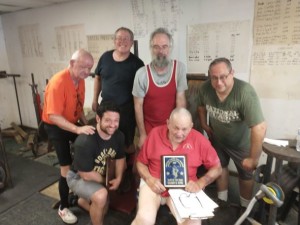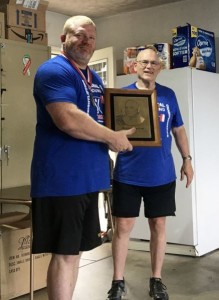Club of the Year
By Eric Todd

Club of the year: Clark’s Gym. Pictured: Joe Caron, Abe Smith, Dave DeForest, Randy Smith, Bill Clark, and Tony Lupo. Not pictured: a host of lifters
I was finally able to award the Club of the Year awards over the past 2 weekend. The first place finisher was none other than Clark’s Gym. Clark’s is our oldest and longest running club having been officially recognized as a club in the USAWA since 1993. I can only assume that is when they started recognizing clubs, as I know Clark’s Gym had lifters lifting in the USAWA since its inception. Clark’s had not been exceptionally active for a few years, but made an absolute resurgence over the past couple. Bill and company have seen old members who have been away for a time return to their all-round roots, as well as drawing in a slew of new lifters into the fold, bring new blood to our organization. They were the top club at 2021 nationals. At that same national championships, they took down the top 3 spots in the men’s division, and 4 of the top ten. They had seven of the top ten in the postal championship. Two of the top three in the Heavy Lift were Clark’s Gym members, and they had a representative of the gym at Worlds who came in 5th. They had 20 members in 2021, and 22 as of the writing of this article. I don’t know how the points came out, but I cannot imagine it was close.

KCSTRONGMAN is Runner-Up. Pictured: Lilly Todd, Eric Todd, Everett Todd, John Strangeway, Leroy Todd, Stacy Todd, and Chris Todd. Not Pictured: Lance Foster
Coming in second was my own KCSTRONGMAN club. Talk about new blood, I think we have collectively reduced the mean age of the USAWA by like 40 years. We were the runner-up club at 2021 nationals, having three lifters in the top ten (2 in the men’s division and one in the women’s). We also had two in the top five at the heavy lift. We had 10 lifters in 2021, and 9 members as of the writing of this article.
I truly believe that one of the means by which we can grow is through the club system. So find some like-minded people and start up a club if you are flying solo. Maybe next year your club will be the recipient of one of these plaques!


